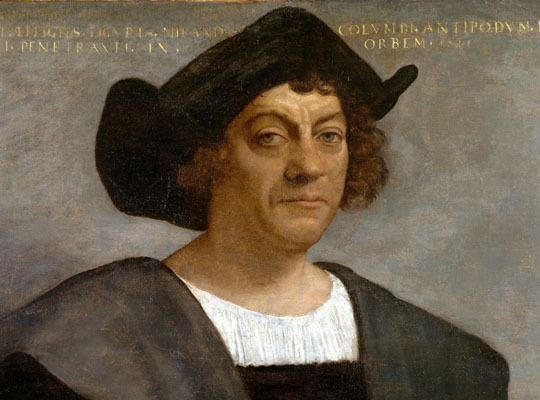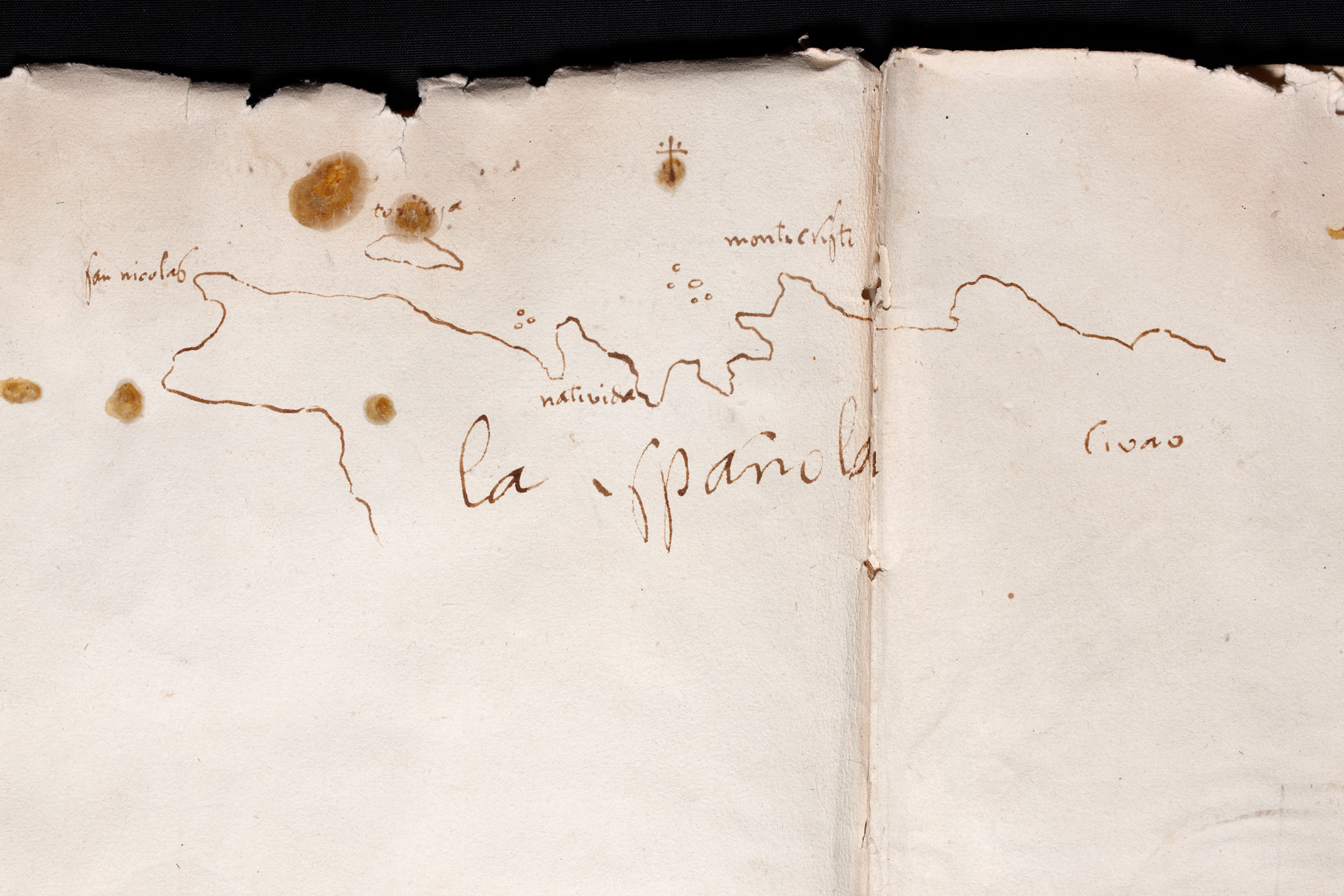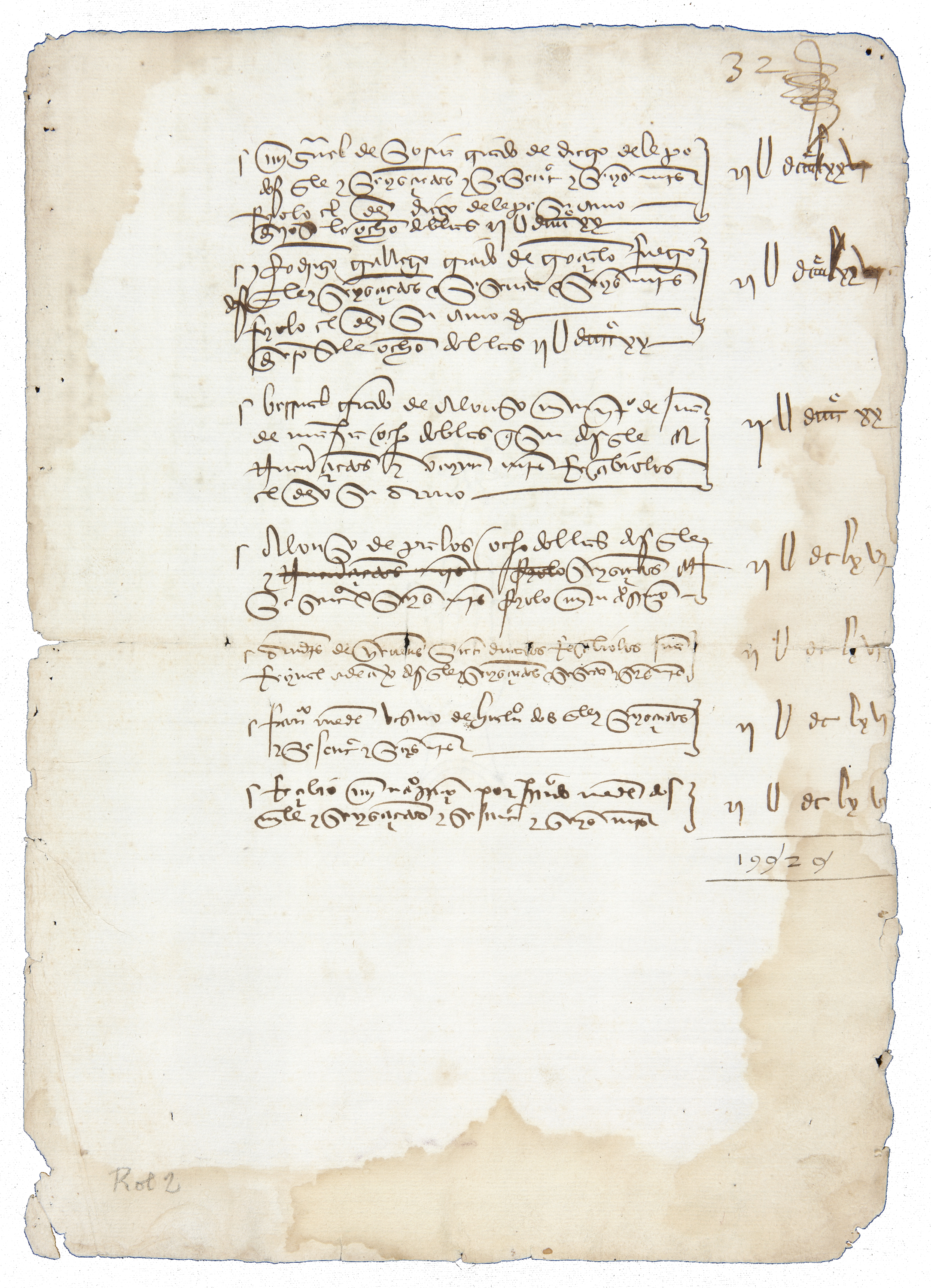Meadows Museum celebrates Columbus Day Weekend with rare collection of handwritten documents by Christopher Columbus
The Meadows Museum at Southern Methodist University is celebrating Columbus Day weekend by displaying rare, historic handwritten documents by Christopher Columbus.

DALLAS (SMU) — The Meadows Museum at Southern Methodist University is celebrating Columbus Day weekend by displaying rare, historic handwritten documents by Christopher Columbus.
 1492. From Christopher Columbus’ Logbook documenting the journey of discovery of the New World. Map of La Español. Paper, covered in parchment. Colección Duques de Alba |
The collection – featuring Columbus’ logbook containing the first map of the New World as drawn by Columbus, and a roster of his crew – is a highlight of the ongoing special exhibition Treasures from the House of Alba: 500 Years of Art and Collecting.
Visitors will enjoy free admission to see the Columbus documents and the entire Treasures from the House of Alba exhibition from 2 to 9 p.m. Saturday, October 10 during the Discover Spain! Festival, which is part of the Meadows Museum’s Golden Anniversary. Museum-goers of all ages can take part in a fun and engaging learning experience including live Spanish music, dance, food, films and more. (Regular admission prices are in effect on Friday, Oct. 9 and Sunday, Oct. 11, and the museum is closed on Mondays, including Columbus Day.)
“We are honored to present this extraordinary assemblage of documents relating to Christopher Columbus as part the groundbreaking exhibition Treasures from the House of Alba: 500 Years of Art and Collecting,” said Mark A. Roglán, The Linda P. and William A. Custard Director of the Meadows Museum and Centennial Chair in the Meadows School of the Arts. “As we prepare to celebrate Columbus Day, the Meadows Museum is incredibly grateful to share these documents, which are such an important part of the Alba collection and world history as a whole.”
Columbus Day became a federal holiday in the United States in 1937, although people have been celebrating the explorer’s arrival in the Americas since the colonial period: In 1792, several major U.S. cities celebrated the 300th anniversary of Columbus’ landing in the New World, and in 1892, President Benjamin Harrison led Americans in celebrating the 400th anniversary of the event. Like Columbus Day in the United States, Spain’s national day, Fiesta Nacional de España, commemorates Columbus first voyage to the Americas in October 1492.
Most of the Alba family’s Columbus documents entered their collections though the marriage of Juan Francisco Fitz-James Stuart, 2nd Duke of Berwick, to Doña Catalina Ventura Colón of Portugal, 8th Duchess of Veragua and a descendant of the Columbus family.
 Christopher Columbus’s list of the people who went on his 1492 journey of discovery. Paper, 4 folios. Colección Duques de Alba |
Important Columbus artifacts on display at the Meadows Museum include
- Christopher Columbus’s logbook of the Voyage of Discovery of the New World. Map of La Española, (1492): This booklet from Columbus’ first voyage contains a short text and a simple drawing of the northern coast of Hispaniola, the first island he landed on in the New World (and home of the present day Dominican Republic and Haiti). This is the first map of the New World, as drawn by Columbus during his Voyage of Discovery.
- Royal decree of King Ferdinand and Queen Isabella, naming Christopher Columbus admiral, viceroy, and governor of the islands and mainland of the Ocean Sea (1494): This seal is part of an authorization to travel on La Isabela and is signed by the monarchs themselves; it is a document of capital importance with regard to the powers assigned to Columbus.
- Christopher Columbus’ list of the people who went on his 1492 Journey of Discovery (1498): The list contains the names of forty sailors and cabin boys in the voyage. Columbus made this list not to preserve the names for posterity, but rather as a payroll list to record the money he had advanced to the crew.
- Repostero Gelves (Liria), La Vera Cruz (1680-1690): One of a series of 12 Flemish tapestries that features the coat of arms of the Counts of Gelves (the First Count of Gelves married a granddaughter of Christopher Columbus) and the motto “To Castile and León, Columbus Brought a New World.” Each bears the name of an American enclave—in this example the city of Veracruz.
Born in Italy, Christopher Columbus completed four voyages across the Atlantic Ocean in the service of the Catholic Monarchs of Spain. His voyages started the Spanish colonization of the New World and began a period of European exploration that lasted hundreds of years and shaped the modern Western world.
Items relating to the exploration of the Americas include:
- Decree granting coat of arms to Martín Moctezuma (1536)
- Decree granting coat of arms to Francisco Pizarro (1536)
- Mexican Silver Tray (17th century)
- Fernão Vaz Dourado (Portugese, c. 1520-c.1580), Portulano, Atlas of the World (1568)
The Columbus documents are part of the special exhibition Treasures from the House of Alba: 500 Years of Art and Collecting. Made up of more than 130 works, it’s the first exhibition to be devoted entirely to the major works of art assembled by this family, reflecting centuries of history in Spain and Europe. It is also the first exhibition designed for an international audience.
Organized chronologically according to significant periods in the family’s history, the exhibition is a history of two families and their patronage of the arts over the course of five centuries. It begins at the end of the Middle Ages with the rise of the Álvarez de Toledo family as one of the most important lineages of Castile. The family reached its first political and cultural pinnacle with Don Fernando Álvarez de Toledo (1507-1582), third Duke of Alba, whose life spanned the reigns of Emperor Charles V and King Philip II.
About the Meadows Museum
The Meadows Museum is the leading U.S. institution focused on the study and presentation of the art of Spain. In 1962, Dallas businessman and philanthropist Algur H. Meadows donated his private collection of Spanish paintings, as well as funds to start a museum, to Southern Methodist University. The Museum opened to the public in 1965, marking the first step in fulfilling Meadows’ vision to create a “Prado on the Prairie.” Today, the Meadows is home to one of the largest and most comprehensive collections of Spanish art outside of Spain. The collection spans from the 10th to the 21st century and includes medieval objects, Renaissance and Baroque sculptures, and major paintings by Golden Age and modern masters. Since 2010 the Museum has been engaged in a multidimensional partnership with the Prado, which has included the exchange of scholarship, exhibitions, works of art, and other resources. The Meadows Museum is celebrating its 50th Anniversary in 2015 with a series of special exhibitions and programs. Visit http://www.meadowsmuseumdallas.org for more information.